You're so dense (compliment)
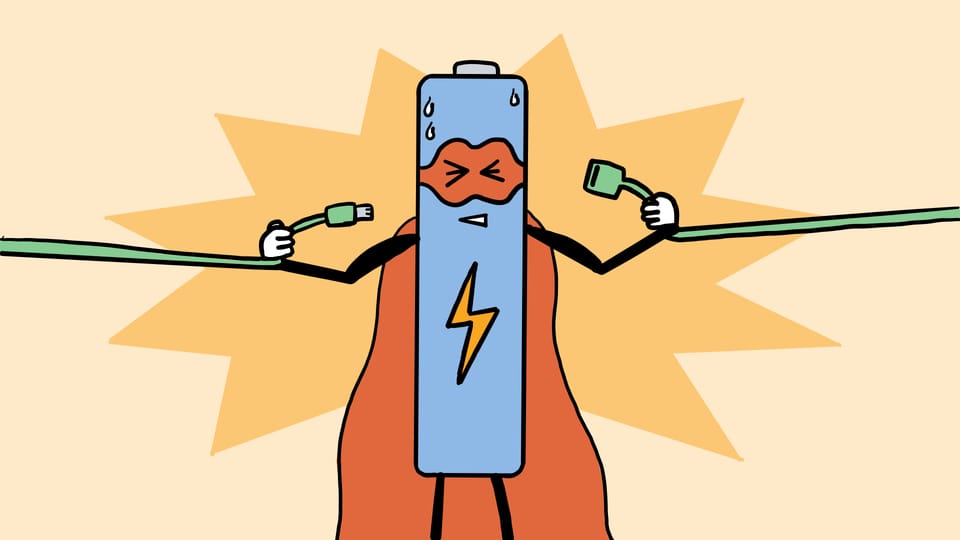
This is the third chapter in our series on batteries. Read part 1 here and part 2 here.
Batteries today are mad dense
What do we mean by 'energy density'?
Density describes the relationship between mass and volume. If a person's volume remains the same but their mass increases, they become heavier without getting larger. Probably this means they've been lifting weights, since my cousin once told me muscle is heavier than fat. A densely populated city like New York isn't geographically huge, but its population is greater than nine whole other states combined. And yet all those states get two senators each. Go figure!
In the context of batteries, we're talking about energy density, which means the amount of electric energy a battery can store relative to its volume or, more commonly, its weight.
When it comes to batteries, weight generally counts more than volume. We want our phones to have a long battery life, it's cool if they're the size of a burrito, but we don't want them to weigh ten pounds.
Battery weight is particularly important when it comes to Electric Vehicles (EVs), which are essentially just massive batteries with wheels and an electric motor.
(Ever wondered where the battery sits in an EV? Right beneath your feet! EV batteries are massive, weighing anywhere from 1,000 to 3,000 pounds. Putting them down there does allow you to have front and rear cargo space, however.)
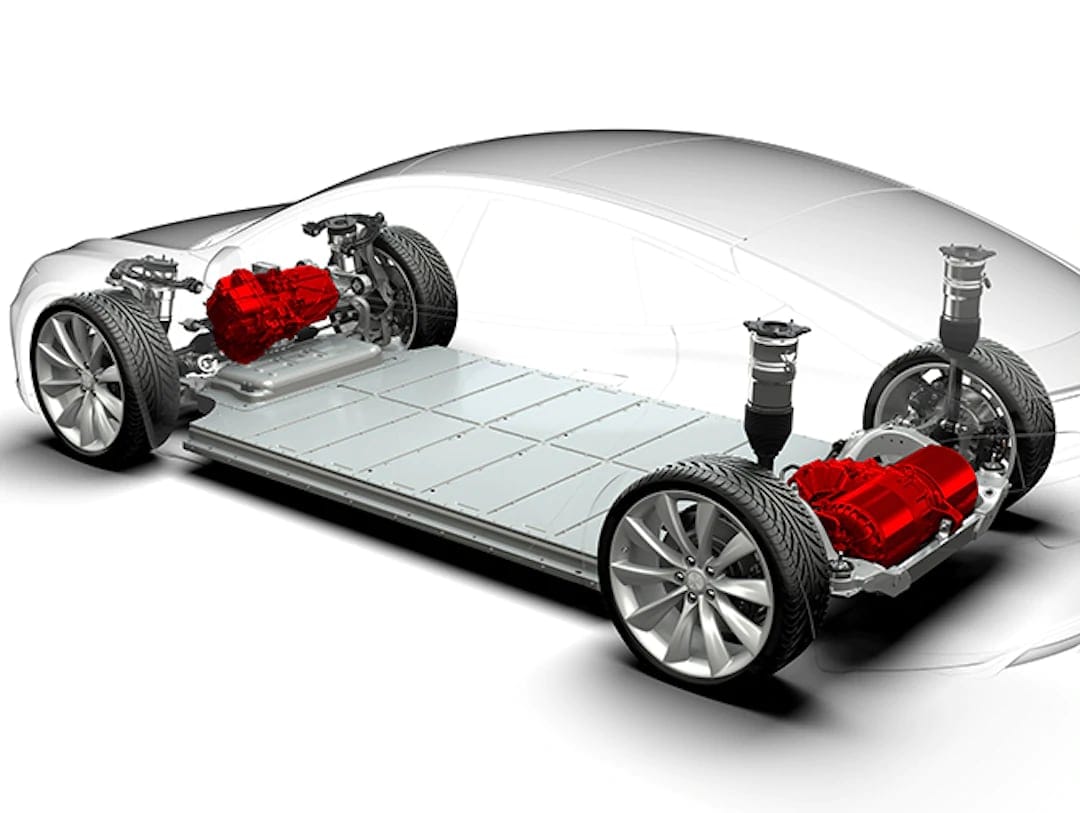
You can guess why battery weight matters here. A heavier car requires more energy to accelerate than a lighter car. So if your battery can store lots of energy but it weighs 10 tons, all that energy won't get you very far—you're gonna use it all up backing out of the driveway. The ideal scenario is to have a battery that's both lightweight and energy dense.
How much has battery density improved over time?
Last week, we talked about learning curves—the idea that under certain repeatable conditions, manufacturing costs fall steadily over time.
A great way to bring down costs is to improve your efficiency. And that's exactly what's happened with battery density.
A few examples:
Sony's breakthrough Lithium Ion battery cell for their 1991 Handycam had an energy density of 80 watt-hours per kilogram (Wh/kg).
A mere 34 years later, auto manufacturer Stellantis (owner of Jeep and Dodge), working in concert with Factorial Energy out of Massachusetts, successfully produced batteries with an energy density of 375 Wh/kg, which they plan to roll out in a "demonstrator fleet" next year.
Meanwhile, Chinese battery behemoth CATL recently claimed to have produced an LI battery cell with a density of over 500 Wh/kg (though it still needs third-party validation).
So, yeah. Battery density has indeed improved by several hundred percent—and all signs point to that improvement continuing apace. Thanks, learning curves!

Some folks have legitimate concerns about switching to an EV from a gas-powered car due to the perception that EVs have limited 'range', i.e. how far the EV can drive on a single charge. Continued advances in energy density will put these concerns to rest.
Here's why:
- Today, the average gasoline-powered sedan can go roughly 400-600 miles on a full tank of gas.
- The Tesla Model 3 (their sedan) has a range of around ~300 miles, depending on the trim.
- By 2028, Toyota plans to be mass-producing batteries that enable over 600 miles of driving range.
Pretty soon, EVs will be able to drive farther than their gas-powered counterparts (which are known in the clean energy world as Internal Combustion Engine vehicles, or ICE vehicles).
ICE vehicle drivers (and manufacturers) are running out of ways to justify their continued dominance.
"Uh, what about charging, dipshit?!" the EV skeptic dutifully inquires.
Battery charging: today and tomorrow
It's true nobody wants to spend an hour charging their Cybertruck at a parking lot charging station. That's simply too much time to expose oneself to public ridicule.
Thankfully, battery charging has been climbing its own dizzyingly steep learning curve.
Chinese automaker BYD, which recently surpassed Tesla in EV sales, by the way, claims its new electric sedan can get nearly 250 miles worth of driving range from just a five-minute charge. Five minutes!
Of course, we can't have nice things like super-fast charging here in America. This is due to our many personal freedoms, such as, uh... [checks notes] owning dozens of military-grade firearms. So our best EV chargers are only about half as powerful as BYD's, and there aren't very many of them.
But there is a silver lining. Generally speaking, EV drivers don't refuel the same way ICE vehicle drivers do, i.e. by pulling up to the Shell station to pump some petrol. Most EV drivers charge their cars overnight in their garage using lower-voltage chargers. This method takes a lot longer, but that doesn't matter if you're asleep. Plus, it puts less strain on our energy grid (a topic to be further explored next week).
For the un-garaged set (myself included), hope is on the horizon. A very cool startup called its electric is building out curbside charging in cities across the U.S. Just find yourself a parking spot near one of their unobtrusive chargers and plug in for the night, bingo bango bongo.
Another thing: we tend to overvalue an EV's maximum range. The average American drives 37 miles a day. It's true that if we all want to make the annual family pilgrimage to Dollywood, we will require more and better charging infrastructure. And it's likewise true that this infrastructure has been slow to materialize. That's because there's a game of chicken being played by the charging infrastructure people and the EV buyers: both would prefer the other to become more widespread before they invest too much money in building or buying.
When a consumer group and a manufacturing group are both afraid to enter the market first, it's my view that the solution is strong government investment in both sectors. But what do I know!
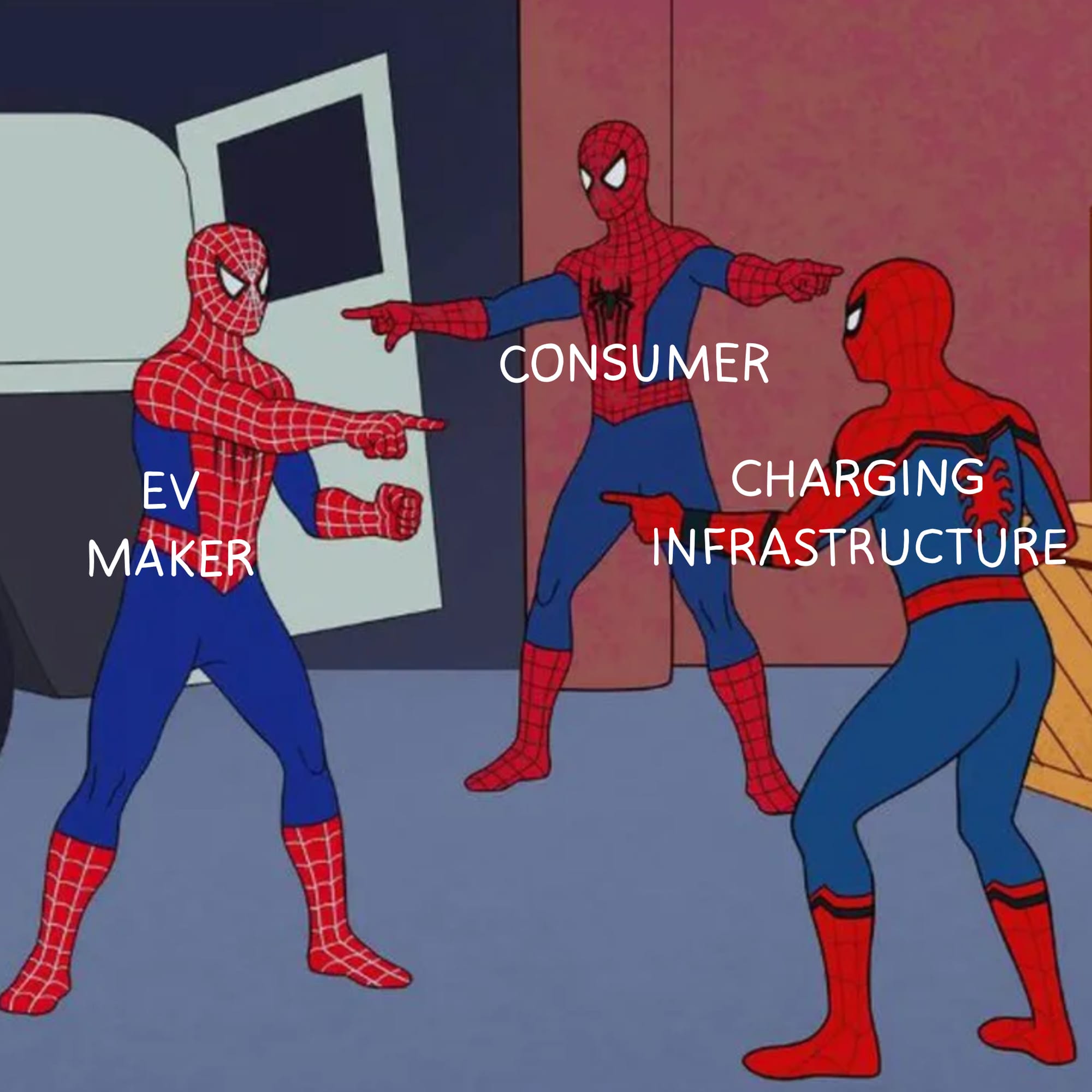
Let's return to the topic at hand. Batteries: what even are they?
Battery chemistries
What flavors you got?
I'm not gonna get into the weeds on how batteries work. It's a complex operation that I dare not approach in these pages.
However, it's relatively easy to understand that there are a few main 'flavors' of batteries today, each defined by the elements used to create the battery's 'cathode', the part principally responsible for energy capacity, voltage, and safety.
Many American EVs, for example, employ an NMC battery. That's Nickel, Manganese, and Cobalt. This chemistry has a high energy density, can charge pretty fast, has a long cycle life (i.e. can be charged, drained, and recharged many times without wearing down too fast), and is safer than some of the other available chemistries.
The big downside of the NMC battery lies in the name. Mining Nickel and Cobalt is expensive and disastrous for both the climate and local populations.
But what can you do?
...A new challenger approaches!
Is that LFP's music?!
We pivot to a new chemistry, is what we do. Enter the LFP battery: Lithium, Iron, and Phosphorous—all abundant, (mostly) inexpensive minerals.
Beyond being loads cheaper to manufacture, LFP is a step-change safer than NMC. LFP's elements are chemically stable, which certainly sounds like a good thing, and it has a much higher 'thermal runaway threshold', which is the scary name for the internal temperature at which a battery ignites in a chain-reactive fiery mess.
A brief aside on battery safety
I get why the thought of batteries exploding scares people. There were a rash of deadly fires here in NYC caused by illegally imported e-scooters outfitted with poorly manufactured batteries. But the truth is, batteries almost never explode. I mean, I despise Tesla as much as the next guy, but if there were Teslas blowing up every other day we'd be hearing a lot more about it. Unlike, say, the 40 thousand deaths caused by auto wrecks every single year in the U.S., which rarely seem to make the news.
A second brief aside on battery safety
In my humble opinion, our fear of batteries is, more than anything, a fear of the unknown. People are perfectly comfortable driving vehicles filled to the gills with a highly-explosive liquid that quite literally explodes a couple feet from our frail bodies every time we drive. We think nothing of parking these explosive-laden vehicles in our driveways at night. We do the same thing with our gas-powered ovens and water heaters. My point here is not that we should be more afraid of these things, but that for all our fear of change, we get used to new stuff really quickly.
Anyways, back to LFP batteries. This chemistry was once thought to lack the energy density necessary to power a car, but lo and behold, Chinese manufacturers have been steadily ascending the learning curve, such that today LFP is the world's dominant battery chemistry. They're used in all the Chinese EVs and are taking the place of NMC is Western EVs.
There are some other competing battery chemistries out there. Engineers have been trying for years to get Sodium Ion batteries (NIB) off the ground. Salt is cheap and abundant, whereas Lithium prices fluctuate up and down. But salt just doesn't have the same capacity for energy density as Lithium, and it's hard to displace the dominant chemistry when you don't have a clear competitive advantage. Still, there may be opportunities for NIBs beyond powering EVs. Utility-scale batteries can be huge, so long as they're cheap and safe. We shouldn't rule anything out. Just look how far LI batteries have come!
But it sure seems like LFP will be the dominant battery for a long time. Right?
No, dude! I'm freaking messing with you!
There's yet another type of battery whose arrival has been prophesied for many years that may finally be ready to rock. It's called... the solid-state battery!
I'm being imprecise here, since solid-state is not a chemistry like LFP but refers to replacing the standard liquid or gel electrolyte with a solid electrolyte. Read the Wiki if you're feeling masochistic. The gist is that solid-state batteries theoretically offer a much higher energy density than lithium ion. The 500 Wh/kg CATL battery mentioned earlier (CATL is the Chinese powerhouse) is a solid-state battery. CATL aims to begin small-scale production by 2027. So, it's not here yet, but let's all hope and pray that it's coming soon.
Because we need a lot more batteries, people. A LOT more. And I'm not just talking about in our cars. We need batteries everywhere, and we need them now.
Otherwise, we may be screwed in more ways than one.
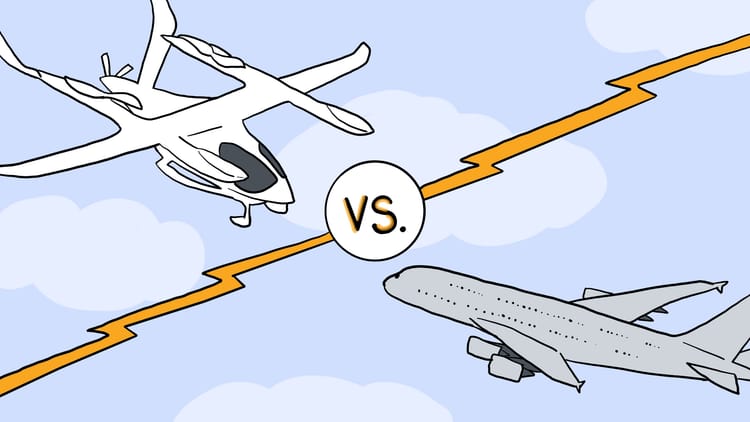

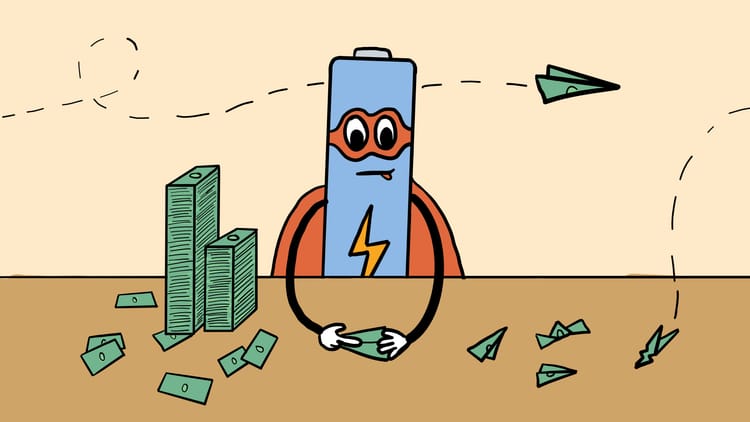

Member discussion